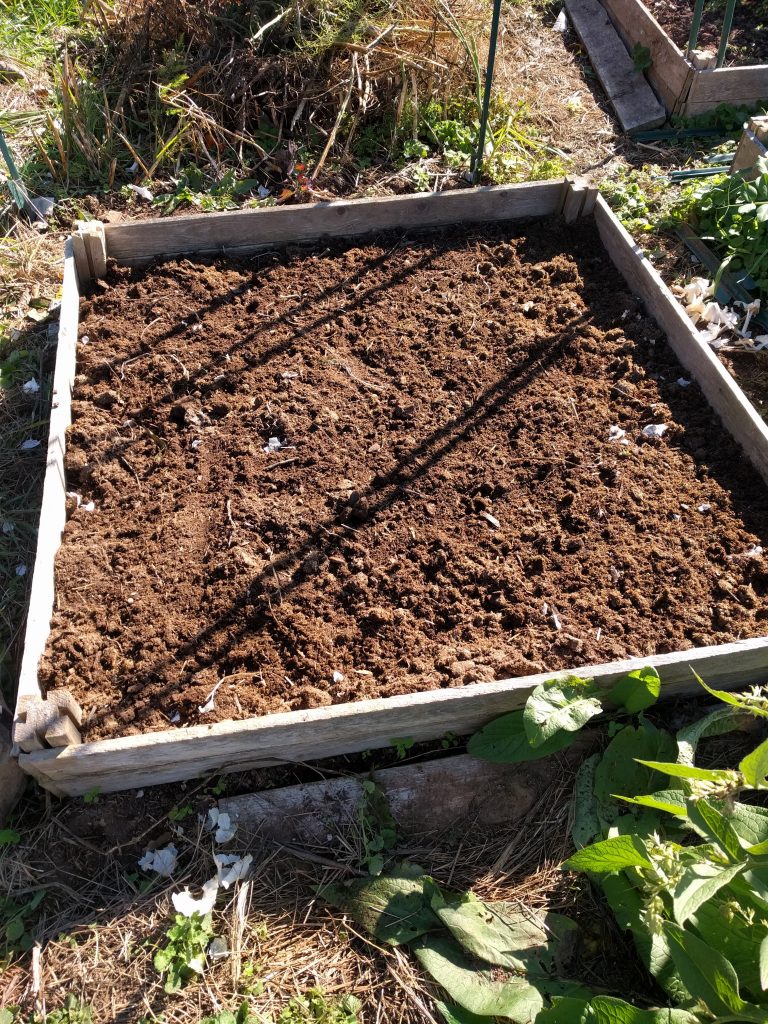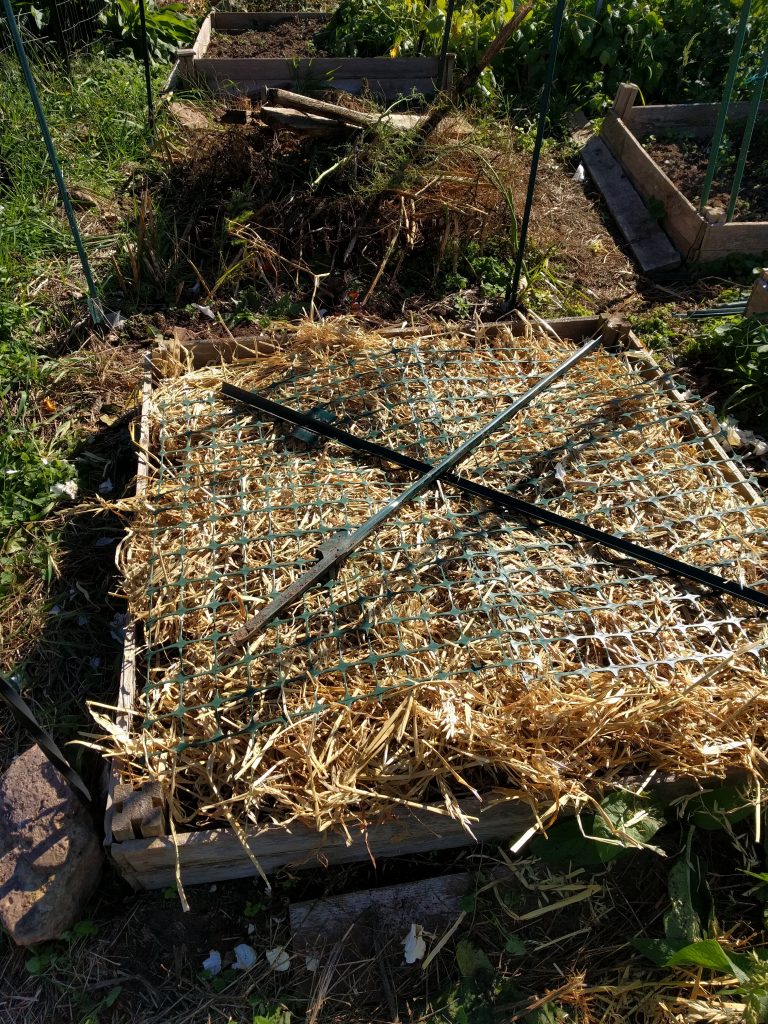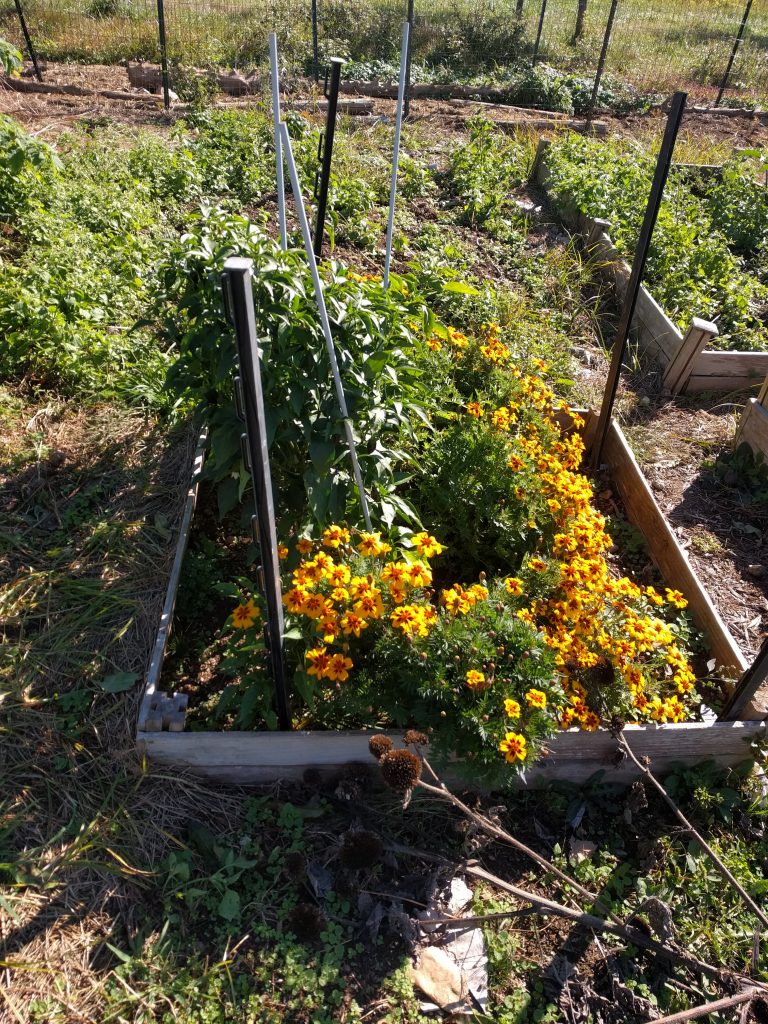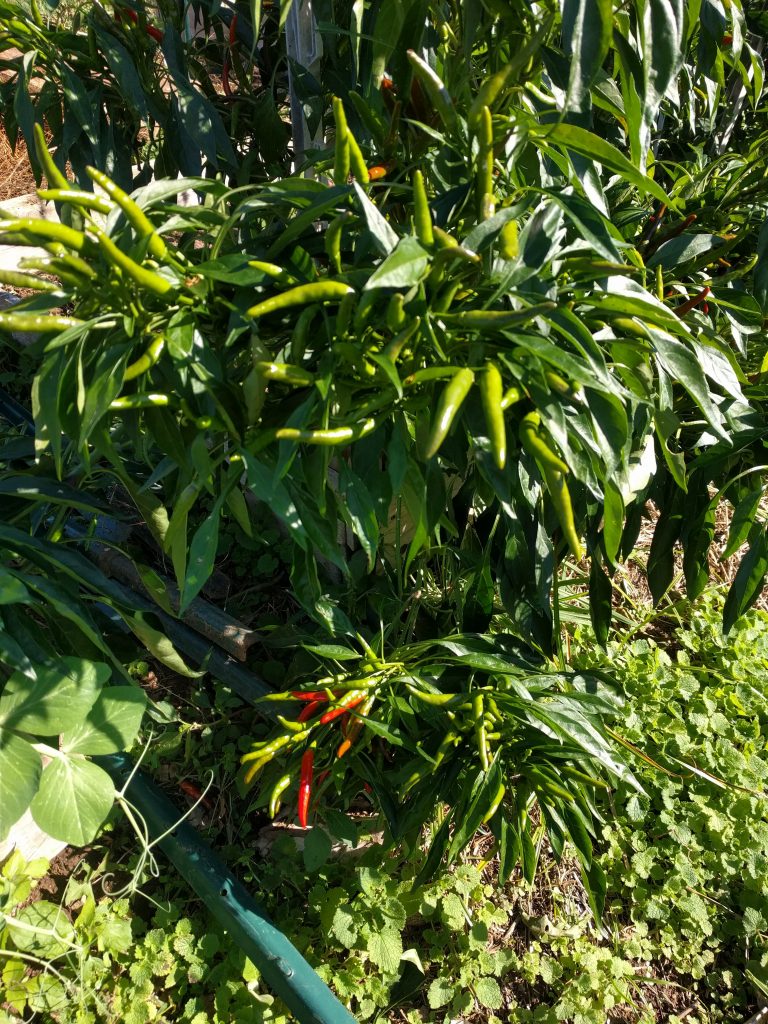Garlic is a flavorful and healthy crop to grow in the garden. First, you know where and how it was grown, and no fossil fuels are required to pull it, cure it, and carry it from garden to house. Garlic is delicious sauteed, roasted, grated or minced into almost any savory food dish. Today, we use it mostly for the culinary benefits, but historically, it was mostly used medicinally. According to studies, it is high in Manganese, Vitamin B6, Vitamin C, Selenium, and a source of fiber. It is touted to help combat the common cold, lower blood pressure, improve cholesterol levels, may help prevent Alzheimers, and many other uses.
Garlic is always in my garden. It gets moved around to different locations, part of the crop rotation for soil health and to try to prevent the tiny nematodes that can sometimes get in garlic or onions and cause them to spoil. Garlic is planted in the fall to give it time to produce rootlets, then as the soil begins to warm in spring, the clove that was planted will produce the bulb that is harvested in late June. Sometimes, tiny bulblets will form atop the green leaves. They are like seeds and can be planted in fall, pulled the following summer, and the small cloves then replanted that fall and will produce bulbs the second year. Two of my softneck garlics produced bulblets and I saved them to plant with my seed garlic this year.
Yesterday morning, the box that contained most of the tomatoes this year was thoroughly cleared of weeds and large roots. This morning, a good load of compost was dug in, digging out a couple of brick sized rocks that had escaped prior preparation of that area. This was the first year that corner of the garden had been planted, it had previously been the compost pile and after seeing how the asparagus shaded that spot, it probably should still be the compost area, but the garlic will mature before the asparagus gets tall, then I will likely move the box to another area and return that spot to compost as the asparagus bed can’t be moved.



The box was planted with 16 Romanian Red cloves, a bulb that produces only 5 or 6 huge cloves, 22 German Hardy cloves each bulb had 6 to 8 cloves, 30 unknown hardneck cloves from garlic purchased at the Farmer’s Market, 20 soft neck cloves from garlic I planted and harvested, plus the 6 bulblets to see if that process actually works. With any luck, I will harvest 88 bulbs of garlic next summer and 6 mini bulbs to replant.

The fall peas weren’t trellised, they were planted around the perimeter of the box with carrots in the middle. They are full of blooms. Today is predicted to be 75 f and only about 48 f tonight. Tomorrow’s high is 52 f and the low 34 f. Tomorrow afternoon I will cover them and hope for the best.

This box had several peppers planted in it, a row of marigolds, and the cucumbers. Once the cucumbers were done, the marigolds took over. They sheltered out the two bell pepper plants. The taller pepper plants are Jalapenos and still blooming, so they too will be covered.

The Thai peppers aren’t blooming and each day more ripen red to be picked and strung to dry. Those two plants may be pulled and hung upside down in the garage where most of the remaining peppers will continue to ripen. The Serrano planted next to them is so heavy with peppers that the branches are near breaking point. It is near the box with the ground cherries, so that area may be covered. Saturday night is also in the 30’s but the day time temp will rise near 60. Those two nights are followed by about 2 weeks of 60s to mid 70s days and upper 40s to mid 50s nights, so if I can save the plants through those two nights, there will be more harvest. Then it drops back into the 30s at night again and it may be the end for the season. The area behind and to the right of the marigolds is the old mint bed that still lacks definition and the potato bed that has been weeded and weeded, but never replanted. I guess the winter and early spring will be spent clearing those areas again, supplementing it with compost and beds created to plant in for the spring garden. Next year, I want more space between my tomatoes and also between my peppers. I probably won’t try to grow corn again unless it is popcorn which I have had success with in the past. Potatoes were a fluke only because I had a few pounds sprouting, but they did so well, I might repeat them. The potato onions were a fun experiment, but the onions are so small they are only good for skewering for grilled veggies, so I will return to planting organic sets that produce decent sized onions. For years I have tried to use the Square Foot Garden method with limited success as some plants overgrow others in the same box thus reducing instead of improving the yield. I’m leaning towards 4 foot wide beds the width of the garden and planting in rows or big blocks. To do that, I will have to unstack and pull out serviceable wood salvaged from the old deck and restack what is too short or too heavy for me to work with.
Each year the garden morphs slightly into a different format, but it still provides me hours of healthy work and many pounds of produce. It is slowing being put to bed for the winter, trying to eek out as much produce as possible before the night freezes do it in entirely.
Today, we visited the local farm equipment sales and service to inquire about a new 5 foot brush hog and tractor servicing. The price on the brush hog was much higher than we expected and I’m not sure the amount of use it would get with the local farmer haying and brush hogging many areas, that the expense is justified. We may continue to wait on that purchase and see if we can find a better price elsewhere.
